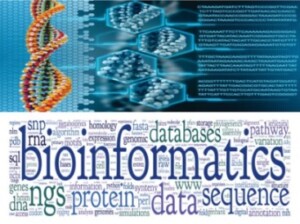In this post, AI discusses bioinformatics expectations and realities.
Bioinformatics is a rapidly growing field that combines biology, computer science, mathematics and statistics to analyze and interpret biological data such as DNA sequences, gene expression, protein structures, and metabolic pathways. Bioinformatics has many applications in different areas of biology, such as genomics, proteomics, phylogenetics, biomedicine and ecology. However, bioinformatics also faces many challenges and limitations that may not be apparent to those who are new to this field. In this article, we will discuss some of the common bioinformatics expectations and realities and provide some tips for overcoming the difficulties and maximizing the benefits of bioinformatics.
What Is The Best Bioinformatics Explanation? Answer by AI
Some bioinformatics expectations and realities
Many people are attracted to bioinformatics because they expect to work on exciting and challenging problems, such as finding new genes, discovering new drugs, or understanding complex diseases. However, bioinformatics is not always as glamorous as it sounds. In reality, bioinformatics involves a lot of tedious and repetitive tasks, such as cleaning and formatting data, debugging code, running software tools, and writing reports. Moreover, bioinformatics requires a lot of skills and knowledge that are not easy to acquire or master, such as programming languages, algorithms, databases, statistics, molecular biology, and biochemistry. Therefore, bioinformatics can be frustrating and overwhelming for many beginners and even experienced professionals.
One of the expectations that many people have about bioinformatics is that it is easy and fast to perform complex analyses on large datasets using existing software tools and databases. While it is true that bioinformatics has made significant advances in developing user-friendly and powerful tools and resources for various biological problems, it is also important to realize that bioinformatics is not a magic bullet that can solve any question with a few clicks. Bioinformatics requires a solid understanding of both the biological question and the computational methods, as well as a critical evaluation of the results and their limitations. Bioinformatics also involves a lot of trial and error, debugging, optimization and validation of the analysis pipeline, which can be time-consuming and frustrating.
The expectation is that bioinformatics is easy and fun; you just need to run some software and get the results. But the reality is that bioinformatics is hard and complex. You need to understand the biology, the mathematics, the statistics, the algorithms, and the programming behind the software. You also need to deal with large and noisy data sets, multiple sources of error and bias, and conflicting or incomplete information. You need to critically evaluate the quality and validity of your results, and communicate them effectively to other scientists.
Bioinformatics requires a lot of skills and knowledge, but you don’t have to learn everything at once. Start with a specific problem or question that interests you, and learn the relevant tools and concepts as you go. Seek help from experts or online resources when you encounter difficulties or doubts. Don’t be afraid to make mistakes or ask questions. Bioinformatics is a learning process that never ends.
Another expectation that some people have about bioinformatics is that it can provide definitive answers and insights to any biological problem. While bioinformatics can certainly generate novel hypotheses and discoveries from large-scale data, it is also essential to acknowledge that bioinformatics is not a substitute for experimental validation and biological interpretation. Bioinformatics results are often probabilistic, uncertain, incomplete or contradictory, depending on the quality of the data, the assumptions of the methods, the parameters of the analysis and the availability of relevant information. Bioinformatics results need to be carefully verified by independent methods, such as wet-lab experiments or literature review, and integrated with existing biological knowledge and context.
A third expectation that some people have about bioinformatics is that it is a homogeneous and well-defined discipline that has a clear scope and boundary. However, bioinformatics is actually a very diverse and dynamic field that encompasses many different subfields, such as structural bioinformatics, functional genomics, systems biology, metagenomics, etc., each with its own goals, methods, challenges and applications. Bioinformatics is also constantly evolving and expanding as new technologies, data types, questions and opportunities emerge in biology. Bioinformatics is not a static or isolated field, but rather an interdisciplinary and collaborative field that interacts with other fields of science.
Another expectation is that bioinformatics is a solitary activity; you just need a computer and an internet connection. However, the reality is that bioinformatics is a collaborative activity. You need to work with other bioinformaticians, biologists, clinicians, computer scientists, statisticians, and other disciplines. You need to share your data, methods, code, results, and insights with others. You need to give and receive feedback, criticism, and suggestions. You need to follow ethical and reproducible practices.
Bioinformatics benefits from diversity and teamwork. Seek out opportunities to collaborate with others who have different backgrounds, perspectives, and expertise. Join or create communities of practice where you can exchange ideas, learn new skills, and solve problems together. Use open source platforms and tools that facilitate data sharing and reproducibility. Acknowledge your sources and contributors.
In summary
Bioinformatics is not a field for everyone. It requires a lot of passion, curiosity, patience, creativity, and perseverance. It also requires a lot of collaboration and communication with other researchers from different disciplines and backgrounds. Bioinformatics can be rewarding and satisfying for those who enjoy learning new things, solving problems, and making discoveries. However, it can also be disappointing and stressful for those who have unrealistic expectations or do not appreciate the challenges and difficulties involved in bioinformatics.
Bioinformatics is an exciting and rewarding field that has many potentials and possibilities for advancing biological research and applications. However, bioinformatics also has its own realities and challenges that need to be recognized and addressed by both bioinformaticians and biologists. By having realistic expectations and a critical attitude towards bioinformatics, we can better appreciate its strengths and limitations, and make more effective use of its tools and resources.
See other artificial intelligence posts.
